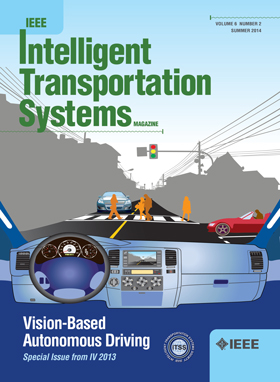Risk Assessment of Cyclists in the Mixed Traffic Based on Multilevel Graph Representation
IF 7.9
1区 工程技术
Q1 ENGINEERING, CIVIL
IEEE Transactions on Intelligent Transportation Systems
Pub Date : 2025-01-30
DOI:10.1109/TITS.2025.3532679
引用次数: 0
Abstract
Accurate assessment of the cyclist risk is a crucial task for the safety system of autonomous vehicles (AVs). This paper proposes a framework for defining and evaluating cyclist risk levels, considering behavioral cues. The framework comprises three modules: the cyclist graph construction (CGC) module, the risk label generation (RLG) module, and the risk assessment (RA) module. The CGC module constructs a spatiotemporal graph model of the cyclist with both the behavioral and risk information. The RLG module leverages the graph representation method (GRM) to extract features and assigns risk labels using unsupervised learning. The RA module employs spatiotemporal graph convolutional networks (ST-GCN) to extract features from the cyclist graph. Additionally, it facilitates feature fusion through interactions between the human body and the two-wheeler and between hierarchical levels. The fused features, along with the risk labels, are used to train a classifier for the risk assessment of cyclists. The proposed framework is validated using real-world data, and the comparative results with state-of-the-art methods demonstrate the effectiveness and accuracy of the proposed approach in cyclist risk assessment in mixed traffic.求助全文
约1分钟内获得全文
求助全文
来源期刊

IEEE Transactions on Intelligent Transportation Systems
工程技术-工程:电子与电气
CiteScore
14.80
自引率
12.90%
发文量
1872
审稿时长
7.5 months
期刊介绍:
The theoretical, experimental and operational aspects of electrical and electronics engineering and information technologies as applied to Intelligent Transportation Systems (ITS). Intelligent Transportation Systems are defined as those systems utilizing synergistic technologies and systems engineering concepts to develop and improve transportation systems of all kinds. The scope of this interdisciplinary activity includes the promotion, consolidation and coordination of ITS technical activities among IEEE entities, and providing a focus for cooperative activities, both internally and externally.
 求助内容:
求助内容: 应助结果提醒方式:
应助结果提醒方式:


